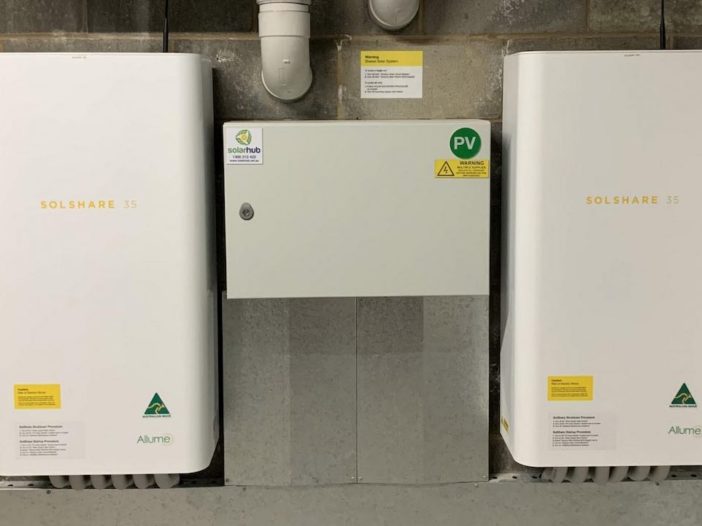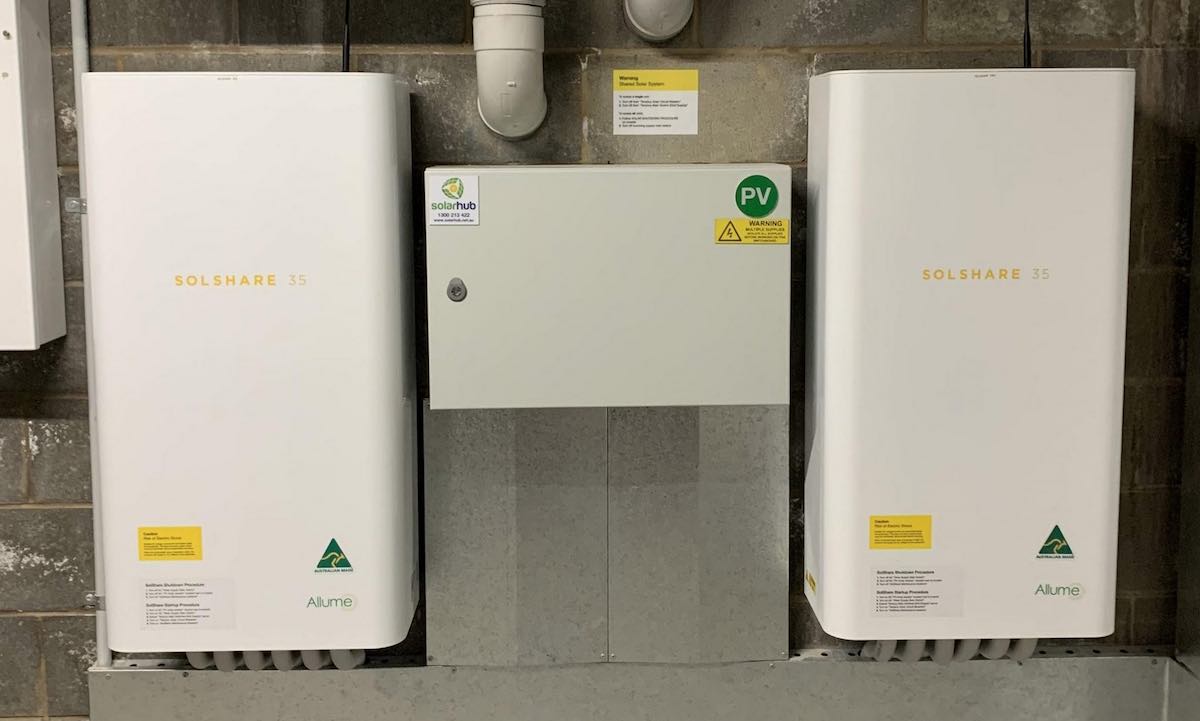
A three-storey building made up of 20 new public homes in Christchurch, New Zealand, is using Australian technology to share rooftop solar between its tenants, potentially cutting their annual energy bills in half.
The SolShare technology from Melbourne-based Allume Energy was integrated into a high-efficiency, high-density complex built by Kāinga Ora – a government agency that provides rental housing for people in need.
Kāinga Ora is trialling solar on stand-alone homes and apartment complexes across the country as part of a trial funded the government’s ‘Māori and Public Housing Renewable Energy Fund’.
In this particular case, the highly energy-efficient apartment complex has been fitted with a 34kW solar array, using 85 REC panels, two Fronius inverters and two Allume Solshare units.
The solar will provides electricity to 20 apartments and to the common areas in the building. Electric hot water cylinders and timers have also been installed in apartments, to further increase the benefit that customers can get from heating their hot water while the solar energy is being generated.
“This is world-first technology that enables the sharing of rooftop solar being used in New Zealand for the first time,” a NZ government announcement said last week.
“Estimates show that this system will save tenants around $350-$400 each year on their power bill,” said NZ minister of housing Megan Woods.
“An advantage of the technology is that it doesn’t restrict the customers’ choice of electricity retailer, and there’s no need to sign up for additional billing services or platforms, so nothing changes for customers other than their power bill.”
Melbourne-based Allume is rapidly becoming a global success story, for its solar ceiling-smashing SolShare technology, which works within an apartment building’s existing metering infrastructure, or “behind the meter,” to allow solar to be distributed and billed to individual apartments.
The technology, first rolled out commercially at a mixed residential and retail building in the Melbourne Bayside suburb of Highett.
In 2020 it was showcased on a large apartment block in the Melbourne suburb of Preston, where 70kW of solar and 54kWh of battery storage is now being shared between 52 apartments, thanks to state government backing.
And there promise to be more jobs like this coming up in Australia – backed by government funding.
The Albanese government’s “solar banks” component of its Powering Australia Plan pledged to cover 50% of the capital costs to get rooftop solar onto the estimated one-third of households effectively “locked out” of the market – a number that includes renters alongside apartment dwellers.
To this end, a joint funding initiative from the federal and ACT governments last month promised to offer rebates and concessional loans to multi-dwelling body corporates, incentivising the installation of shared solar systems.
With $3.6 million in funding from the Albanese government, body corporates will have access to up to $100,000 towards the cost of installing rooftop PV, half through a Commonwealth rebate or grant and half from an interest-free loan from the ACT government’s Sustainable Household Scheme.
It is expected that more than 2,100 households will benefit from the new incentive, including from a potential 35 per cent reduction in electricity bills for Canberrans living in apartments.

Sophie is editor of One Step Off The Grid and deputy editor of its sister site, Renew Economy. Sophie has been writing about clean energy for more than a decade.



